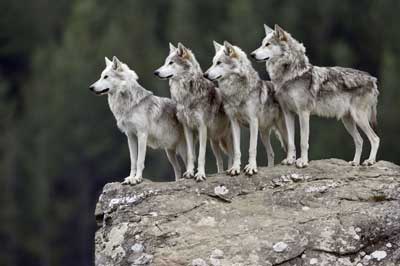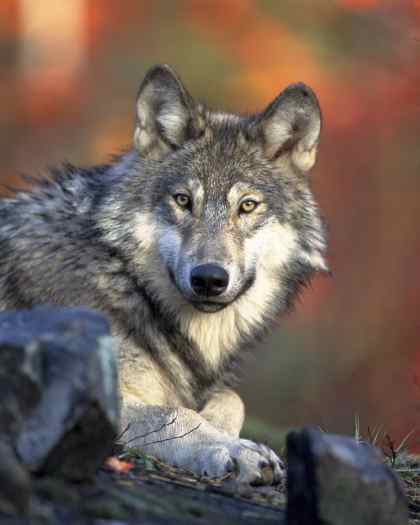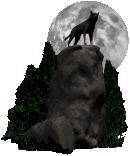
 | ||||||
Pet Nutrition
Previous research had established the wolf as the ancestor of today's dog, but when and where humans first domesticated the animals remained unclear. Peter Savolainen of the Royal Institute of Technology in Stockholm and his colleagues examined samples of mitochondrial DNA (which is passed solely through the mother) from 654 dogs representing all major dog populations worldwide. More than 95 percent of the dogs belonged to just three major groups, the team found. What is more, the distribution among these groups was similar across all regions, which suggests "a common origin from a single gene pool for all dog populations," the authors write. Because the East Asian group displayed the greatest genetic diversity, the scientists posit that dogs were domesticated there first. Prior work had suggested that domesticated dogs came from the Middle East based on archaeological evidence and domestication patterns for other animals.
The results of a second study suggest that soon after domestication dogs began accompanying humans on long journeys. Jennifer A. Leonard of the Smithsonian Institution and her colleagues investigated the origins of dogs in the New World to try to determine whether they arose independently from wolves in the area or if they were tied to their Old World counterparts. The scientists extracted DNA from 37 dogs specimens recovered from archaeological sites in Mexico, Peru and Bolivia that predated Columbus's arrival. In addition, the team analyzed DNA from the remains of dogs found in Alaska that date from before the arrival of European explorers. The researchers found similarities in the genetic sequences that suggest that "ancient American and Eurasian domestic dogs share a common origin from Old World gray wolves.
"Canis familiaris was probably domesticated from the wolf 10-12,000 years ago. It found it's way into North America as far south as Idaho. Given thousands of years to selectively breed mutants that cropped up in their dog colonies, humans have manipulated an almost incredible diversity in this species. And there exist today more than 800 true breeding types worldwide". Looking at the Wolf, no author listed, Teton Science School, ISBN 0-911797-24-6
"A wild wolf is genetically little more distant from the domesticated dog than a wild mustang is to a quarter horse. (That wolf and dog can be hybridized, while a fox and dog cannot, points to the genetic and ancestral affinities of wolf and dog.)...."In actuality, a poodle, like any purebred dog, already has innumerable wolf genes since they share a close common ancestry." Dr. Michael W. Fox, D.V.M.
The wolf in North America, is a predator of primarily large ungulates, that is, animals like moose, elk, and deer. All biological and social aspects of the wolf make it adapted for this role. In general, wolves depend upon ungulates for food year round. The have, however, been known to eat almost every available type of small prey, including small mammals, birds, snakes and lizards, fish, and even insects and earthworms. Grass and berries too are sometimes eaten but none of these items can be regarded as making a significant contribution to the diet. In northern Montana, elk, moose, and deer (mule and white-tailed deer) are the principal prey species. Smaller mammals can be an important alternative to ungulates in the snow-free months. These small mammals include beaver, marmots, ground squirrels, snowshoe hare, pocket gophers, and voles.
This claim is repeated over and over as evidence that wolves and therefore dogs are omnivores. However, this assumption is just that--an assumption. It is not supported by the evidence available to us, and is therefore false! Wolves do NOT eat the stomach contents of their prey. Only if the prey is small enough (like the size of a rabbit) will they eat the stomach contents, which just happen to get consumed along with the entire animal. Otherwise, wolves will shake out the stomach contents of their large herbivorous prey before sometimes eating the stomach wall.
The wolf's diet consists mostly of muscle meat and fatty tissue from various animals. Heart, lung, liver, and other internal organs are eaten. Bones are crushed to get at the marrow, and bone fragments are eaten as well. Even hair and skin are sometimes consumed. The only part consistently ignored is the stomach and its contents. Although some vegetable matter is taken separately, particularly berries.


"The wolf is in fact a wild dog, a member of the scientific family Canidae, which includes domestic dogs as well as other dog-like wild animals such as foxes and jackals. "Scientists believe that wolves are the direct ancestors of today's domestic dogs. They think that early humans domesticated wild wolves to make them useful companions and work animals. Since that time, selective breeding has produced the many varieties of domestic dogs, some of which are very un-wolflike in appearance and habit". Wolf Pack, Sylvia Johnson, Alice Aamodt, First Avenue Editions, ISBN 0-8225-9526-5
What do Wolves eat?
Do Wolves eat grain?
False claim: WOLVES INGEST THE STOMACH CONTENTS OF THEIR PREY.
Conclusion

Nourish the beast inside your pet
Top



Dogs and Wolves are one in the same, genetically and biologically, and have the same nutritional requirements. Our pets should be afforded the opportunity to benefit from the healthy rewards derived through a diet of raw meat, bones and organs along with added vegetables. They should not be forced to ingest grains.
Origins
The dog has long been considered man's best friend. Now new findings may explain just when humans first domesticated their furry friends. According to reports published in the journal Science, today's dogs originated from East Asian wolves about 15,000 years ago. ere to add text.
